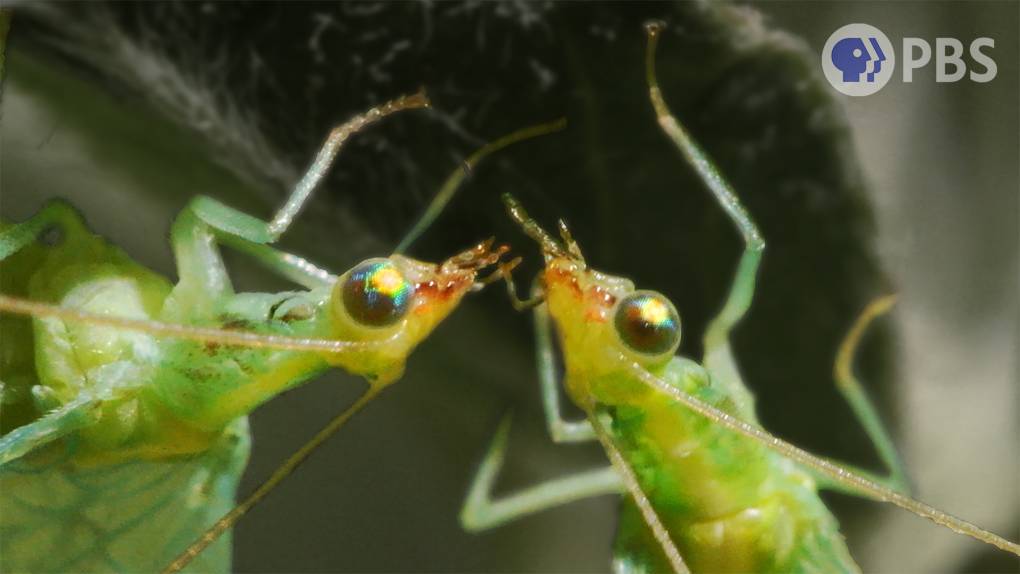
"Male and female lacewings of the same species sing each other essentially the same romantic song. It's encoded in their DNA. One lacewing species sounds a bit like a purring cat, another one more like a growling stomach."
"Each lacewing larva devours hundreds of aphids and other orchard pests each week. It liquefies their insides and slurps them up."
"But even when they find each other, their songs don't guarantee they're a match. Is she here for the right reasons? To find out, they enter this leafy fantasy suite."
"Yes, it is theirs. It's so cute? And so hungry."
Lacewings communicate and attract mates with songs encoded in their DNA, resembling sounds like a purring cat or a growling stomach. When they find a match, they engage in intimate mating rituals, but competition can arise, adding drama to the process. Their larvae are beneficial to gardeners, consuming numerous aphids each week. After mating, the lacewing couples produce larvae that develop into adults, continuing their lineage and the cycle of life. The insights into lacewing behavior highlight their ecological importance, showcasing their role in pest management and garden health.
Read at Kqed
Unable to calculate read time
Collection
[
|
...
]